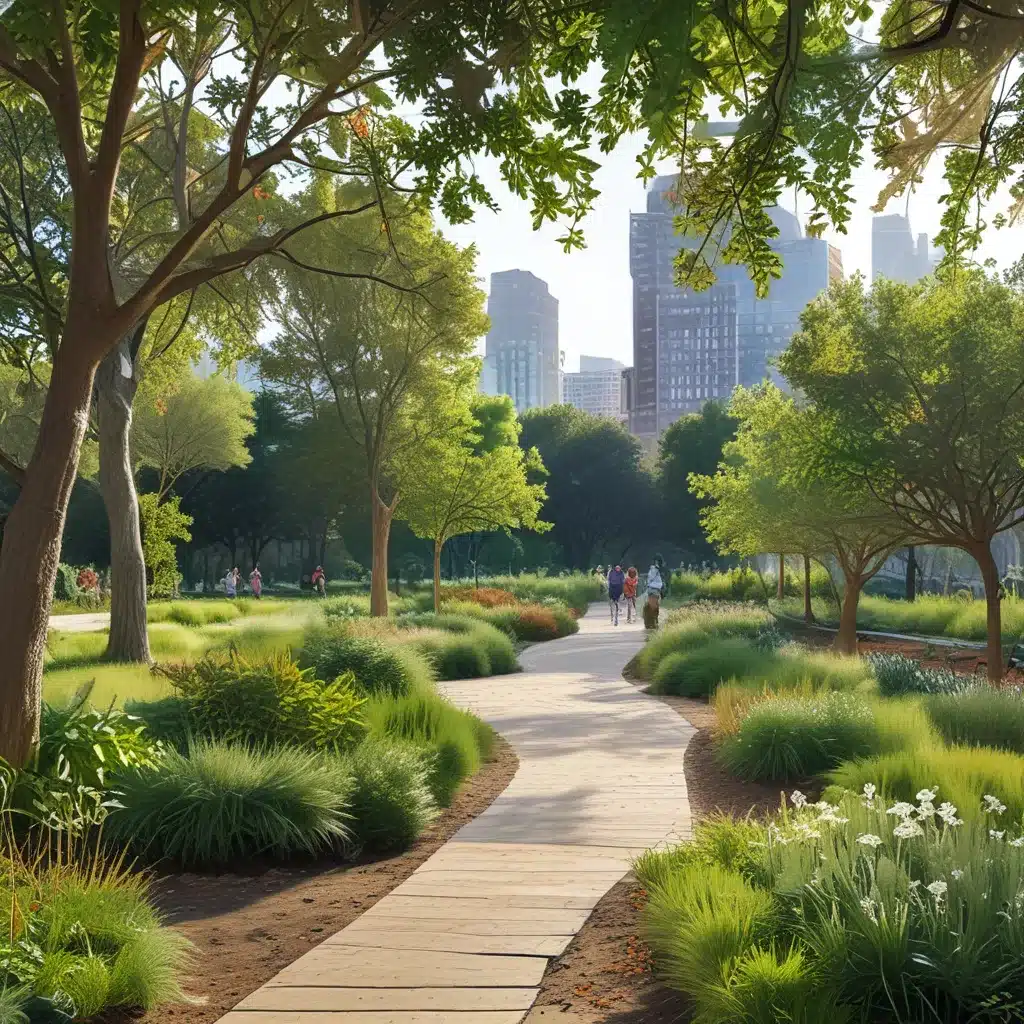
As someone who has lived in bustling cities for most of my life, I can attest to the immense value of urban green spaces. These oases of nature, tucked amidst the towering skyscrapers and bustling streets, offer a much-needed respite from the concrete jungle. And Seoul, South Korea, with its rich tapestry of parks and gardens, is a prime example of a city that has embraced the importance of green spaces for its residents.
Discovering the Wonders of Seoul’s Parks
When I first moved to Seoul, I was struck by the sheer number and diversity of parks scattered throughout the city. From the expansive Namsan Park, with its iconic N Seoul Tower, to the serene Gyeongbokgung Palace Gardens, each green space seemed to have its own unique character and charm.
One of my personal favorites is the Hotel Stay Inn Seoul‘s very own backyard – the picturesque Seokchon Lake Park. With its glistening waters, well-manicured paths, and vibrant cherry blossoms in the spring, it’s the perfect place to unwind and reconnect with nature. I often find myself strolling along the lakeside, taking in the tranquil atmosphere and watching the ducks and swans glide gracefully across the surface.
The Importance of Urban Green Spaces
But it’s not just the serene beauty of these parks that makes them so valuable. As the research from the National Institutes of Health suggests, urban green spaces play a crucial role in improving the overall well-being of city dwellers. From providing opportunities for physical activity and recreation to reducing stress and improving air quality, these green oases offer a wealth of benefits that are essential for maintaining a healthy and sustainable urban environment.
One of the key aspects that the research highlights is the importance of accessibility. Parks and gardens that are easily accessible to residents, within a short walking distance, are far more likely to be utilized and appreciated. This is where Seoul really shines, with a network of parks and green spaces strategically positioned throughout the city, ensuring that no one is too far from the soothing embrace of nature.
Designing for Optimal Urban Green Spaces
But it’s not just about the quantity of green spaces; the quality and design of these spaces are equally important. As the article from Strong Towns points out, a great urban park is one that is filled with activity, providing a sense of natural surveillance and safety. It’s also essential that these spaces offer a variety of amenities and features to cater to the diverse needs and preferences of the community.
The designers of Seoul’s parks have clearly recognized this, creating spaces that are both visually appealing and functional. From the meandering pathways and well-maintained landscaping to the thoughtfully placed benches, playgrounds, and picnic areas, these parks are designed to encourage people to linger and engage with their surroundings.
Embracing the Beauty of Nature in the City
As I stroll through the various parks and gardens of Seoul, I can’t help but marvel at the seamless integration of nature and urban life. It’s like a hidden oasis, a secret garden that offers a much-needed respite from the hustle and bustle of the city. The article from Baltimore Greenspace highlights the importance of such spaces, noting that they not only provide physical and mental health benefits but also foster a sense of community and connection among residents.
And it’s not just the parks themselves that captivate me; it’s the way the city has embraced the beauty of nature throughout. From the vibrant cherry blossoms that line the streets to the carefully curated urban forests, Seoul has found a way to weave green elements into the very fabric of the city, creating a harmonious blend of the natural and the man-made.
Cultivating a Sustainable Future
As I sit on a bench in Seokchon Lake Park, watching the sun dip below the horizon, I can’t help but feel a sense of gratitude for the foresight and dedication of the city’s urban planners. They’ve recognized that the well-being of a city and its people is inextricably linked to the presence of green spaces, and they’ve worked tirelessly to ensure that Seoul remains a haven for those seeking respite from the concrete jungle.
And as I look towards the future, I can’t help but feel optimistic about the continued growth and evolution of Seoul’s parks and gardens. With the increasing focus on sustainability and the importance of urban green spaces, I believe that cities like Seoul will only continue to lead the way in creating vibrant, livable urban environments that seamlessly integrate the beauty of nature with the convenience of modern life.

